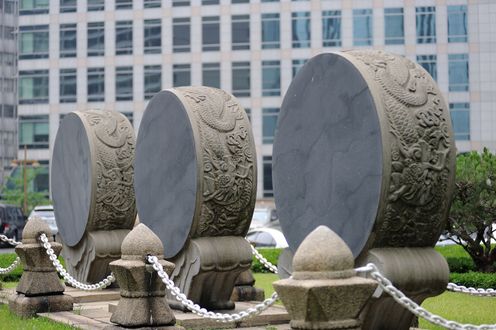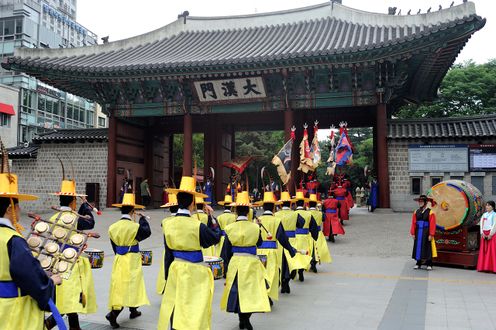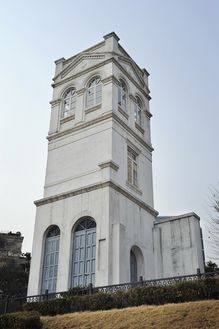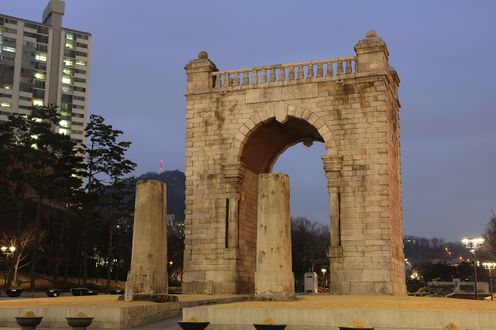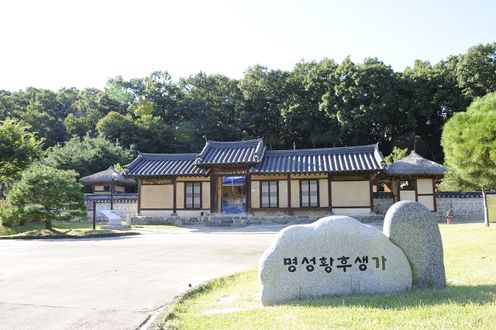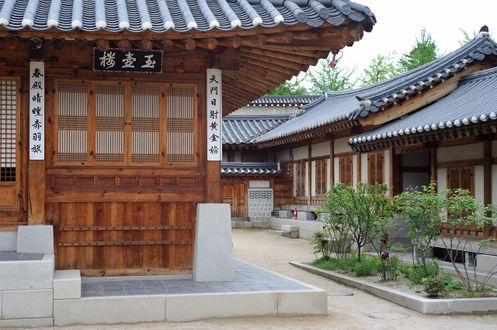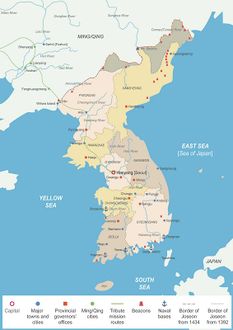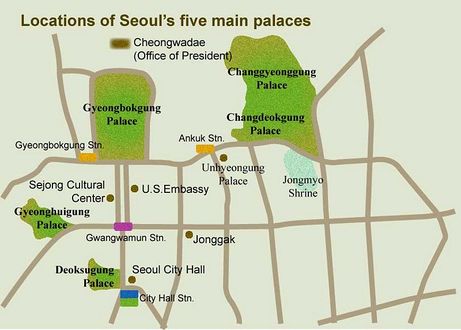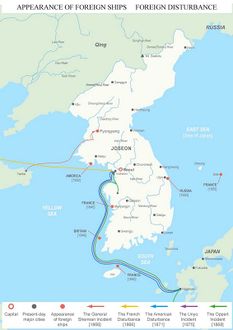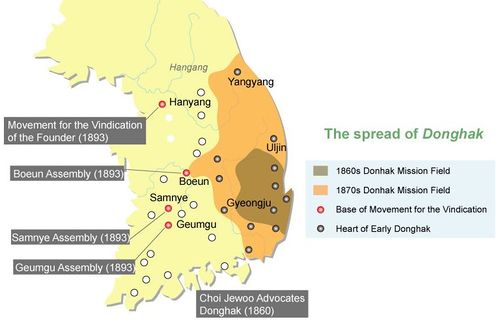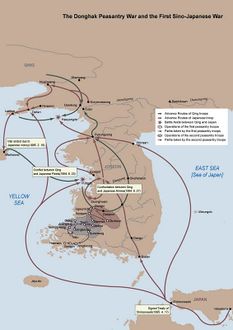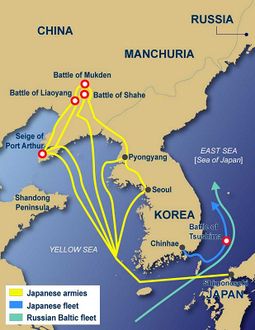"A New Imperial Nation is Proclaimed - The Korean Empire"의 두 판 사이의 차이
| 10번째 줄: | 10번째 줄: | ||
<gallery mode=packed heights=220px> | <gallery mode=packed heights=220px> | ||
| − | 파일:1-11.석고-DSC_7329.jpg| | + | 파일:1-11.석고-DSC_7329.jpg|Stone drums commemodating the 40th Anniversary of Gojong's Enthronment (Sogong-ro, Jung-gu, Seoul) |
| − | + | 파일:2-8.덕수궁-DSC_7273.jpg|Daehanmun, the entrance to Deoksugung Palace (Sejongdae-ro, Jung-gu, Seoul) | |
| − | 파일:2-8.덕수궁-DSC_7273.jpg| | + | 파일:2-8.러시아공사관-ESC_8630.jpg|Part of the old Russian Legation (Jeong-dong, Jung-gu, Seoul) |
| − | + | 파일:2-7.독립문-FSC_5921.jpg|Independence Gate, constructed in commemoration of the ending of Joseon's relations with Qing (Hyeonjeo-dong, Seodaemun-gu, Seoul) | |
| − | + | 파일:4-7.명성황후 생가-_GSC9682.jpg|The birthplace of Empress Myeongseong, Gojong's wife (Neunghyeon-ri, Yeoju-eup, Yeoju-gun, Gyeonggi-do) | |
| − | + | 파일:4-7.옥호루-DSC_6484.jpg|Okhoru Pavilions in Gyeongbokgung Palace where Empress Myeongseong was assasinated by the Japanese (Sajik-ro, Jongno-gu, Seoul) | |
| − | + | 파일:1-11.유릉-석상.jpg|Yureung, the royal tomb of Sunjong, the last emperor of the Korean Empire (Honhyureung-ro, Namyangju, Gyeonggi-do) | |
| − | |||
| − | 파일:2-8.러시아공사관-ESC_8630.jpg| | ||
| − | |||
| − | 파일:2-7.독립문- | ||
| − | |||
| − | 파일:4-7.명성황후 생가- | ||
| − | |||
| − | |||
| − | 파일:4-7.옥호루-DSC_6484.jpg| | ||
| − | 파일:1-11.유릉-석상.jpg| | ||
</gallery> | </gallery> | ||
2017년 11월 23일 (목) 12:19 판
The Korean Empire was proclaimed in October 1897 by King Gojong, upgrading the Joseon Dynasty from a kingdom to empire. The Empire lasted until 1910, when it was forcibly and illegally annexed by Japan.
Leading up to the declaration of the Empire, Joseon experienced a series of internal and external influences affecting society and politics. In 1863, when King Cheoljong died with no heirs, a young, distant descendant was selected to be the next king. This boy was King Gojong. Too young to rule, his father, Heungseon Daewongun, took charge of the country until 1873. Policies were initiated by the Daewongun which angered various sectors of society, including the increase of taxes for the rebuilding of palace buildings and the suppression of private Confucian academies. A decade later he failed in a fight for power with the faction of Gojong's wife, Queen Min, and was forced out of politics. The new government submitted to the Japan–Korea Treaty of 1876, when Joseon was forced by Japan through gunboat diplomacy to open its ports, and the door to Western culture was opened. Beginning in 1894, followers of the Donghak (“Eastern Learning”) movement and peasants aggravated by corrupt laws initiated the Donghak Peasant Rebellion, a series of uprisings throughout the country. This internal conflict was used as justification for Qing China and Japan to send troops to the Korean peninsula to wage the Sino-Japanese War. Through Japan's subsequent interference, plans to address the concerns of the peasants and modernize Korea called the Gabo Reforms were implemented. In 1895, as a result of the Treaty of Shimonoseki made in the aftermath of the Sino-Japanese War, Joseon officially become independent of China, to which Joseon had been a tribute state since its foundation. Some saw this as a new freedom for Joseon, and erected the Independence Gate where a tributary gate had once stood. However, it only allowed for further meddling by Japan. In 1895, the Japanese assassinated Queen Min (known posthumously as Empress Myeongseong) in Gyeongbokgung Palace, following which King Gojong sought refuge in the nearby Russian Legation for a year until 1897. During this time, a group called the Independence Club was formed, which advocated strengthened Korean independence and encouraged various reforms and public discussion. In 1897, King Gojong relocated to Deoksugung Palace and declared the Korean Empire.
Following the declaration of the Korean Empire, a series of reforms called the Gwangmu Reforms were put in place to modernize Korea, including the abolishment of social status rankings, adoption of Western uniform, and development of modern infrastructure and education. During this time, schools and hospitals established by Christian missionaries also flourished. However, in 1905, Imperial Japan forced Korea to become its protectorate via an illegal treaty. Japanese troops surrounded the palace, and when King Gojong refused to sign the treaty, Japan instead accepted the signatures of Korean cabinet members at threat of death. This treaty stripped Korea of its sovereignty and gave control of Korea's ports to Japan. Gojong sent appeals to various international heads of state and sent emissaries to Hague Peace Conference in 1907, but these appeals were ignored largely due to the fact that international powers had already agreed to support Japan’s annexation of Korea. In 1907, Gojong was replaced by his son, Sunjong, who was considered a puppet emperor. In 1910, Korea was fully annexed to Japan in another illegal treaty, which Sunjong refused to sign. It was instead signed by the pro-Japanese prime minister. This event marked the end of a 608-year dynasty and the beginning of 35 years of colonial rule.
